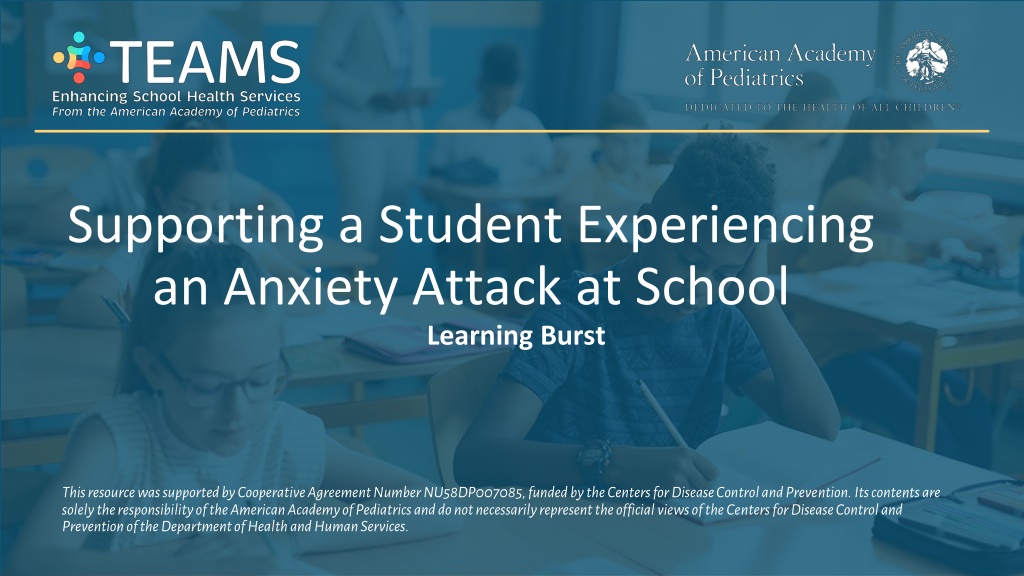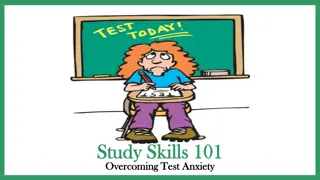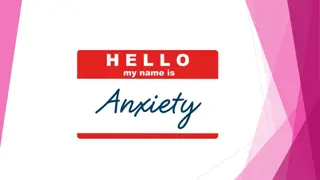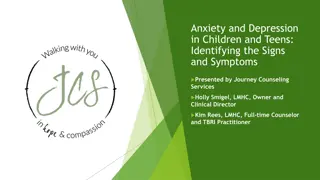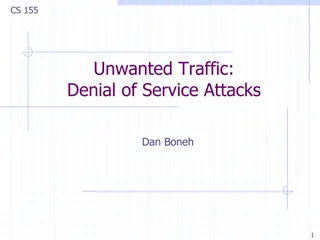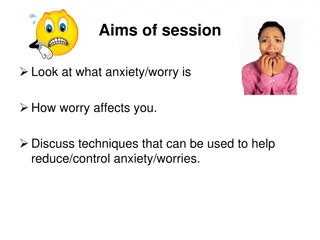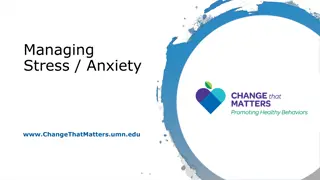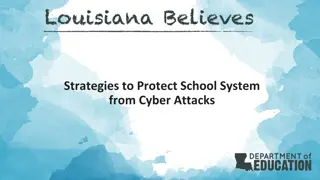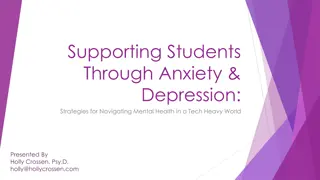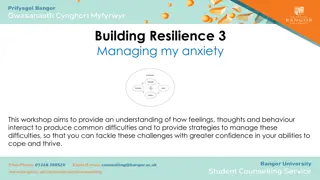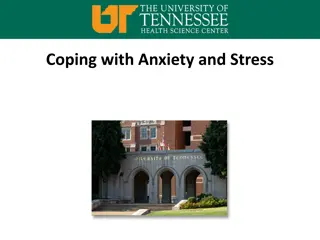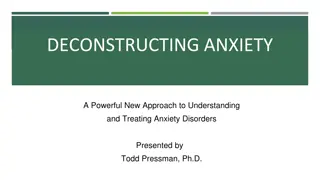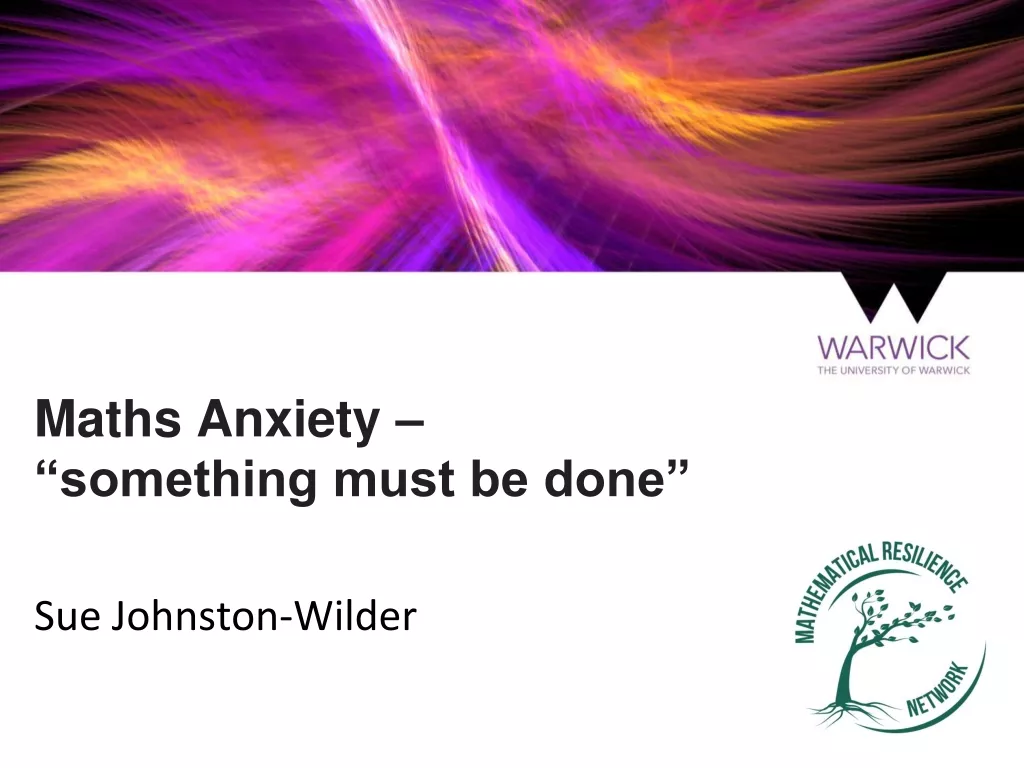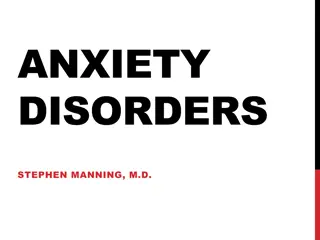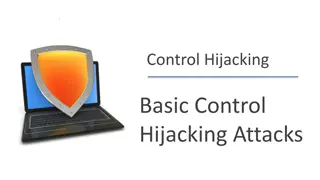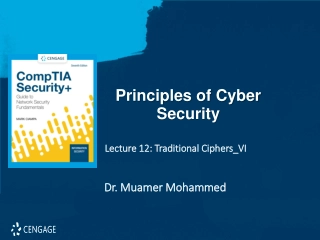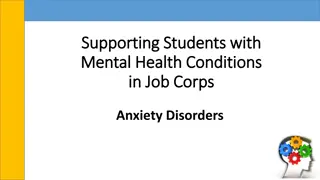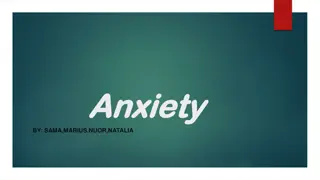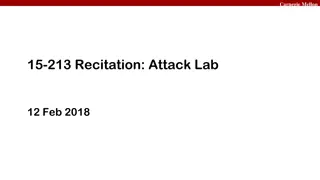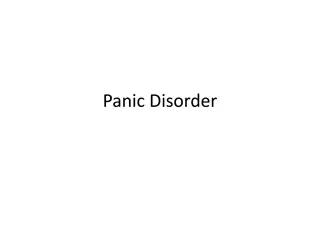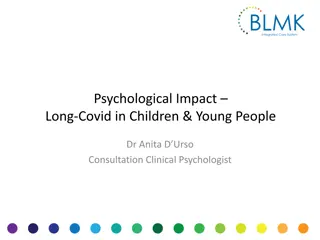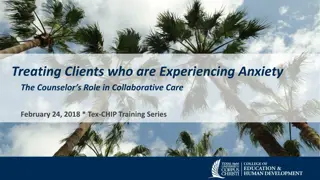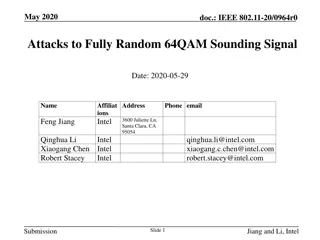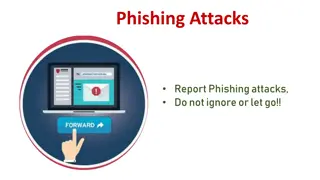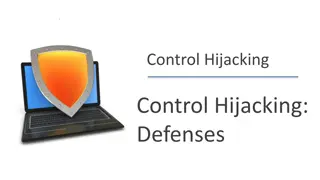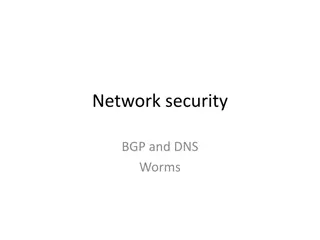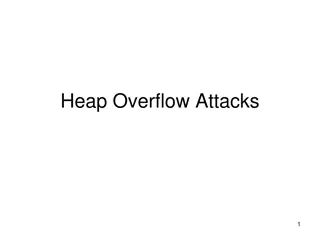Supporting Students with Anxiety Attacks: Strategies and Symptoms
Understanding anxiety attacks in students is crucial for providing appropriate support. Learn about the symptoms, such as sweating, trembling, and rapid heartbeat, and discover key strategies like staying calm, focusing on breathing, and allowing time to recover. Remember, it's essential not to leave the student alone and to seek help when necessary.
Uploaded on Sep 13, 2024 | 0 Views
Download Presentation

Please find below an Image/Link to download the presentation.
The content on the website is provided AS IS for your information and personal use only. It may not be sold, licensed, or shared on other websites without obtaining consent from the author. Download presentation by click this link. If you encounter any issues during the download, it is possible that the publisher has removed the file from their server.
E N D
Presentation Transcript
Supporting a Student Experiencing an Anxiety Attack at School Learning Burst This resource was supported by Cooperative Agreement Number NU58DP007085, funded by the Centers for Disease Control and Prevention. Its contents are solely the responsibility of the American Academy of Pediatrics and do not necessarily represent the official views of the Centers for Disease Control and Prevention of the Department of Health and Human Services.
Learning Outcomes By the end of this learning burst, participants will be able to: Describe what it means to have an anxiety attack List key strategies for supporting a student experiencing an anxiety attack at school
What is an anxiety attack? Also referred to as a panic disorder or attack Form of anxiety Can last minutes or hours More common in adolescents American Academy of Child & Adolescent Psychiatry: Panic Disorders in Children and Adolescents
What are the symptoms of an anxiety attack? Sweating Numbness in the limbs Trembling or shaking Fear of dying/losing control Rapid heartbeat Feelings of impending doom, detachment, losing control Dizziness/ lightheadedness Feeling the need to escape Choking sensation Sense of unreality Difficulty breathing Children s National, Panic Disorders in Children and Adolescents
Supporting a Student Experiencing an Anxiety Attack Can be very traumatic Do not leave the student alone Knowing what to say can be difficult It s ok to ask for help
Strategies for Supporting a Student Experiencing an Anxiety Attack Stay Calm & Claim Control Concentrate on Breathing Allow Time to Recover Try to Understand Creative Education: Supporting a Student Experiencing a Panic Attack
Strategies for Supporting a Student Experiencing an Anxiety Attack Stay Calm & Claim Control Creative Education: Supporting a Student Experiencing a Panic Attack
Strategies for Supporting a Student Experiencing an Anxiety Attack Concentrate on Breathing Creative Education: Supporting a Student Experiencing a Panic Attack NHSinform: How to Deal with Panic Attacks
Strategies for Supporting a Student Experiencing an Anxiety Attack Try to Understand Creative Education: Supporting a Student Experiencing a Panic Attack
Strategies for Supporting a Student Experiencing an Anxiety Attack Allow Time to Recover Creative Education: Supporting a Student Experiencing a Panic Attack
Strategies for Supporting a Student Experiencing an Anxiety Attack Stay Calm & Claim Control Concentrate on Breathing Allow Time to Recover Try to Understand Creative Education: Supporting a Student Experiencing a Panic Attack
When to Seek Additional Support Notify parents & encourage student to be taken to the ER if Student is still breathing fast & is the student s first attack Heart is racing & is the student s first attack Anxiety attack is suspected and is the student s first attack Passed out (fainted) and is now awake Drug or alcohol use is suspected and has symptoms now Psychiatric hospitalization in the past for similar symptoms student is having now Student is very upset and can t be calmed now Call 911 o Severe trouble breathing (can barely speak) o Acts or talks confused o The student is in a life-threatening emergency o Suicidal or becomes suicidal
Helping a Student Reduce the Chance of Future Anxiety Attacks Ask how you can help Talk through possible triggers and coping strategies Cogitative Behavioral Therapy Encourage exercising Practice mindfulness Prioritize sleep Avoid caffeine Find time each day to do something fun/relaxing AAP HealthyChildren.org: Anxiety Attack
Recap Anxiety attacks at school are not unusual Anyone can support a student experiencing an anxiety attack Students should not be left alone during an anxiety attack There are strategies to support students during an anxiety attack Additional support may be needed
Ensure the daily management of anxiety in individual students. Prepare for students experiencing anxiety attacks at school. Provide professional development on anxiety attacks for all school staff. Educate students and family members about anxiety. Create and maintain a healthy and safe educational environment. Remember not all anxiety is bad!
Additional Resources AAP Supporting Students with Anxiety in School AAP Pediatric Mental Health Minute Series: Anxiety AAP Managing Anxiety: Tips for Families AAP Pedialink Free Online Course: Identifying & Caring for Children and Adolescents with Anxiety & Anxiety Disorders AAP HealthyChildren.org, Anxiety Attacks AAP HealthyChildren.org, Anxiety in Teens is Rising: What s Going On? AAP HealthyChildren.org, Help Your Child Manage Anxiety: Tips for Home & School American Academy of Child & Adolescent Psychiatry: Anxiety Disorders Resource Center Anxiety in the Classroom Resource Center
Additional Questions Contact Agency Contact Person and Title Contact Email Address Contact Phone Number
